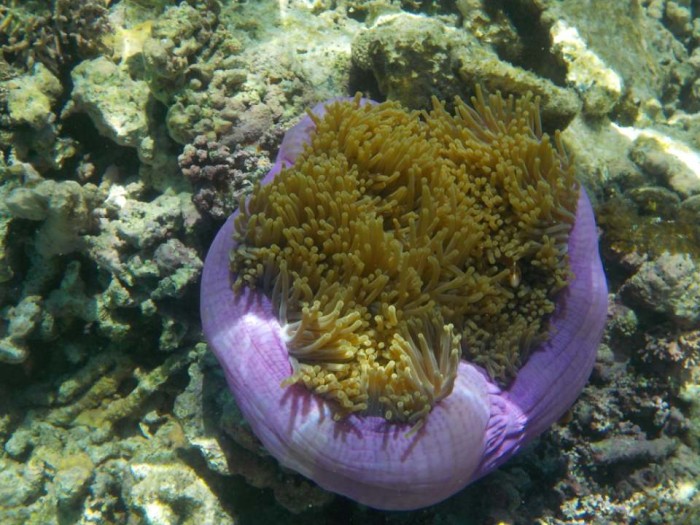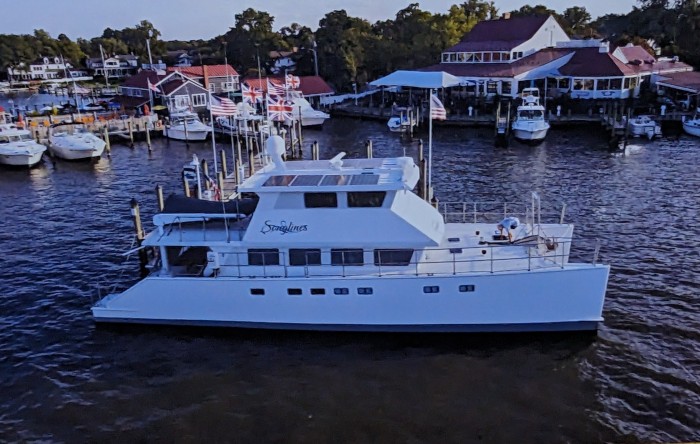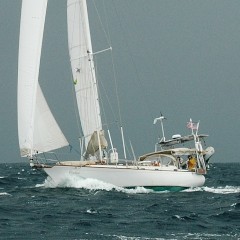
Our Next 30 Years
24 October 2023
01 October 2023
30 September 2023
29 September 2023
21 September 2023
18 September 2023
05 September 2023
04 September 2023
29 August 2023
26 August 2023
30 December 2020
02 April 2019 | Chula Vista Marina, San Diego, California
02 March 2019 | San Diego, Ca
28 February 2019 | San Diego, Ca
28 February 2019 | San Diego, Ca
28 February 2019 | San Diego, Ca
16 January 2019 | Rivergate Marina, Brisbane River, Brisbane, Queensland, Australia
11 November 2018 | Bundaberg Port Marina, Bundaberg, Australia
09 November 2018 | Bundaberg Port Marina, Bundaberg, Australia
04 November 2018 | Bundaberg Port Marina, Bundaberg, Australia
Australia's Great Barrier Reef - Lady Mustgrave Island
11 November 2018 | Bundaberg Port Marina, Bundaberg, Australia

It is always a busy time at the end of the cruising season as we get the boat ready to sit unattended for a bit, while we spend time back in Texas with our family. There are a number of things to do as part of routine maintenance and always a few things to “fix”. On our list of things to “fix” over the past couple of weeks were a torn screecher, re-galvanizing the chain that had gotten a bit rusty (the anchor went along for the ride too), splicing a new dockline that was chafed, and rehabilitating a section of plugged hose/pipe/valve in the blackwater (waste) system (still to be dealt with). Besides the normal inside and outside boat cleaning and polishing, we also serviced the outboard.
We decided to participate in the Go West Rally primarily because they covered our cost of Inward Clearance in their registration fee. If you do the math given the cost of the timber inspection, discounts and give-aways, dinners and drinks, etc. you come out way ahead of the game. They also make sure that you have plenty of fun things to do and and lots of company doing it.
Since we weren’t going to get to do much cruising in Australia (only the section between Bundaberg going south about 200nm to Brisbane), and our land touring will likely be oriented more south due to the time of year, we decided to take the opportunity to visit Lady Mustgrave Island - part of the Southern section of the Australian Great Barrier Reef. We boarded a high-speed catamaran (The Lady Mustgrave Experience) that departed from our Marina, making it easy for us to make the 7AM boarding time. It was about 2.5-3hr to make the 60nm trip out to the reef. That’s correct if you are doing the math, they run at 20+kts - even entering the pass! Lady Mustgrave is a beautiful atoll with a small island that evolved over the years. Besides having some amazing coral and associated fish, it is a haven for breeding turtles and birds. Our time on the reef was spent snorkeling, hiking around the island, and seeing more of the reef via a glass-bottom boat. The tour company in addition to getting us there and back quickly, serving us morning tea, a great lunch and afternoon tea, also passed along a significant amount of information about the reef, the coral eco-system and the birds peculiar breeding habits on the island. We got to see turtles resting in “cleaning stations” on the reef as well as swimming around. The fish population was great with plenty of examples of both large and small species, including rays and sharks. Similarly, we saw examples of all the major coral groups.
We were fortunate to have a dive group from Bundaberg on the tour with us that gave us some great perspective on the Great Barrier Reef. They explained to us that they are upset with the level of miss-information being spread about the condition of the Great Barrier Reef. They feel that the reef is in good condition - both the coral and the fish - and that the stories of the reef dying are all greatly exaggerated. The group participates in a project that photo-documents the condition of the reef (geo-referenced) so that comparisons can be made year after year. The Tour Operators had a bit different perspective, sharing that of the three sections of the Great Barrier Reef, the Southern section (where we were) was by far in the best condition, with limited (10% or less) coral bleaching, etc. The Central section was a little worse off with 20-30% bleaching, and the Northern section was the worse off (closest to the equator) with 40-60% bleaching. Both groups agreed that you could take photographs that could depict what ever story you wanted to tell, and that you needed to understand how corals (both animals and plants) grow, to properly observe them and document their health.
I’ll leave you with a few statistics to put this World Heritage Site in perspective. The reef area covers approximately 344,400 sq km, or roughly 70 million football fields, which is about the area of Italy. The Great Barrier Reef is comprised of over 3,000 coral reefs and 600 islands. It is home to 600 different varieties of hard and soft corals, 1,625 different species of fish, and 133 different varieties of sharks and rays. We feel fortunate to have been able to see a small piece of this marine wonder.
We decided to participate in the Go West Rally primarily because they covered our cost of Inward Clearance in their registration fee. If you do the math given the cost of the timber inspection, discounts and give-aways, dinners and drinks, etc. you come out way ahead of the game. They also make sure that you have plenty of fun things to do and and lots of company doing it.
Since we weren’t going to get to do much cruising in Australia (only the section between Bundaberg going south about 200nm to Brisbane), and our land touring will likely be oriented more south due to the time of year, we decided to take the opportunity to visit Lady Mustgrave Island - part of the Southern section of the Australian Great Barrier Reef. We boarded a high-speed catamaran (The Lady Mustgrave Experience) that departed from our Marina, making it easy for us to make the 7AM boarding time. It was about 2.5-3hr to make the 60nm trip out to the reef. That’s correct if you are doing the math, they run at 20+kts - even entering the pass! Lady Mustgrave is a beautiful atoll with a small island that evolved over the years. Besides having some amazing coral and associated fish, it is a haven for breeding turtles and birds. Our time on the reef was spent snorkeling, hiking around the island, and seeing more of the reef via a glass-bottom boat. The tour company in addition to getting us there and back quickly, serving us morning tea, a great lunch and afternoon tea, also passed along a significant amount of information about the reef, the coral eco-system and the birds peculiar breeding habits on the island. We got to see turtles resting in “cleaning stations” on the reef as well as swimming around. The fish population was great with plenty of examples of both large and small species, including rays and sharks. Similarly, we saw examples of all the major coral groups.
We were fortunate to have a dive group from Bundaberg on the tour with us that gave us some great perspective on the Great Barrier Reef. They explained to us that they are upset with the level of miss-information being spread about the condition of the Great Barrier Reef. They feel that the reef is in good condition - both the coral and the fish - and that the stories of the reef dying are all greatly exaggerated. The group participates in a project that photo-documents the condition of the reef (geo-referenced) so that comparisons can be made year after year. The Tour Operators had a bit different perspective, sharing that of the three sections of the Great Barrier Reef, the Southern section (where we were) was by far in the best condition, with limited (10% or less) coral bleaching, etc. The Central section was a little worse off with 20-30% bleaching, and the Northern section was the worse off (closest to the equator) with 40-60% bleaching. Both groups agreed that you could take photographs that could depict what ever story you wanted to tell, and that you needed to understand how corals (both animals and plants) grow, to properly observe them and document their health.
I’ll leave you with a few statistics to put this World Heritage Site in perspective. The reef area covers approximately 344,400 sq km, or roughly 70 million football fields, which is about the area of Italy. The Great Barrier Reef is comprised of over 3,000 coral reefs and 600 islands. It is home to 600 different varieties of hard and soft corals, 1,625 different species of fish, and 133 different varieties of sharks and rays. We feel fortunate to have been able to see a small piece of this marine wonder.
Comments
| Vessel Name: | Songlines |
| Vessel Make/Model: | 60' power catamaran designed by Malcolm Tennant |
| Hailing Port: | Austin, Texas |
| Crew: | David and Cindy Balfour |
| Social: |
Songlines's Photos - Main
No items in this gallery.
MV Songlines

Who: David and Cindy Balfour
Port: Austin, Texas
Favorites
- S/V FullCircle Position Tracker - Garmin (Delorme) In-Reach SE
- Brad and Charlotte Rowe at BlueFix Boatworks
- Sea Mercy - Fiji Recovery
- Russell Mead at Cascade YachtWorks
- John Bartlett at Bartlett Sails
- Matt Youney
- Dan Bohren and our Friends at Englund Marine in Astoria
- Garry Lidgard Yacht Design
- Roger Hall at North Sails Opua, NZ
- Zack Maxam and Dolph Gabeler at North Sails Long Beach
- Marty Marchant at Platypus Marine, Inc
- Dale Waagmeester at Banks Sails NW
- Hai Mai and OceanStar Yacht Painting
- Caitlin Moore at Southern Spars Capetown
- Don Whalen at Harken
- Robin Sodaro at Hood Sailmakers in Sausalito





